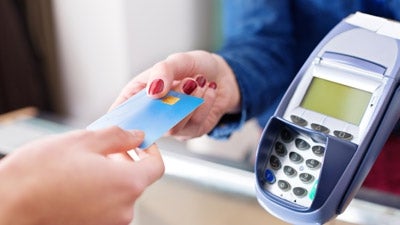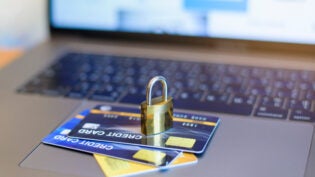
The next time you’re out shopping and supporting the economy, take a quick look at the front door of the store you’re about to enter. There’s a good chance you will see a sign showing customers which forms of payment the business accepts, typically credit card logos. In general, small businesses in all fields accept various forms of payment for the products or services they offer. Having multiple payment options can open the door to more customers and, in turn, increased profits.
Check out this brief overview of what forms of payment you may wish to accept as a small business owner:
1. Credit card payments
The most popular payment option customers choose involves paying by credit card. They are so convenient and easy to simply swipe at checkout, and many payments can be put on them over a short period of time. But it’s important that small business owners are always accounting for the various fees associated with accepting credit cards as one of their forms of payment. Credit card companies put processing fees and certain rules and restrictions on who can take their cards as payment for purchases. Some credit card companies offer better options to business clients, but if possible, it’s generally best to accept multiple credit cards from customers so as not to leave a potential sale on the table because your small business doesn’t accept one. Of course, it depends on your specific situation and financial ability.
2. Debit card payments
From the perspective of a business owner, debit card payments may be more reliable since funds are transferred directly from a customer’s personal or business bank account into the bank account of the company. Because of this, you don’t have to worry about a credit card being denied, a check bouncing due to insufficient funds, or any other payment issue. Financially strapped small business owners usually want to be paid as soon as the money is available. Accepting debit card payments is a great way to achieve this.
3. Checks
In recent years, writing a check out and using it to pay for something has become much less relevant, thanks in large part to technological advancements. With that said, your cashier may not have to process as many checks as they once did. But if you do accept them as one of your forms of payment, make sure all checks your company receives are properly processed—and that your company is compensated from the customer’s bank account. You certainly don’t want a customer to walk into your store, buy something you spent a lot of time designing, pay with a bounced check, and then leave you high and dry.
4. Cash
When it comes to cash payments, they are very basic and really have no strings attached like other forms of payment. There are a few steps to take when handling cash. Make sure you have enough bills and change on hand. Have a properly secured cash register and safe. Also, be on the lookout for counterfeit money. You’ll likely never run into this, but you can’t take a chance, particularly if someone makes a large purchase. Finally, it’s wise to document all cash transactions in your business with receipts.
5. Payments made online
More small business owners than ever are jumping online to sell their products and services virtually. This is why online and electronic forms of payment represent such a major category today. Allowing customers to make payments through a few mouse clicks in an online shopping cart system can greatly increase your overall sales. Using services like PayPal—or simply making a credit or debit card payment online—offer tremendous convenience to customers. However, it’s important to realize that accepting online forms of payment comes with certain rules for merchants involved in the e-commerce space. These may include processing fees or payment limits. In addition, don’t forget about potential Internet sales tax requirements in your state as this has become a big change over the past few years. On a final note, with so many data breaches popping up, it is critical to maintain a secure database of customer information and credit card numbers, no matter if you sell online or through other means. Accounting for security should be a top priority more than ever.
This article was originally published by 1800 Accountant
Published: October 27, 2014
3239 Views
3239 Views












